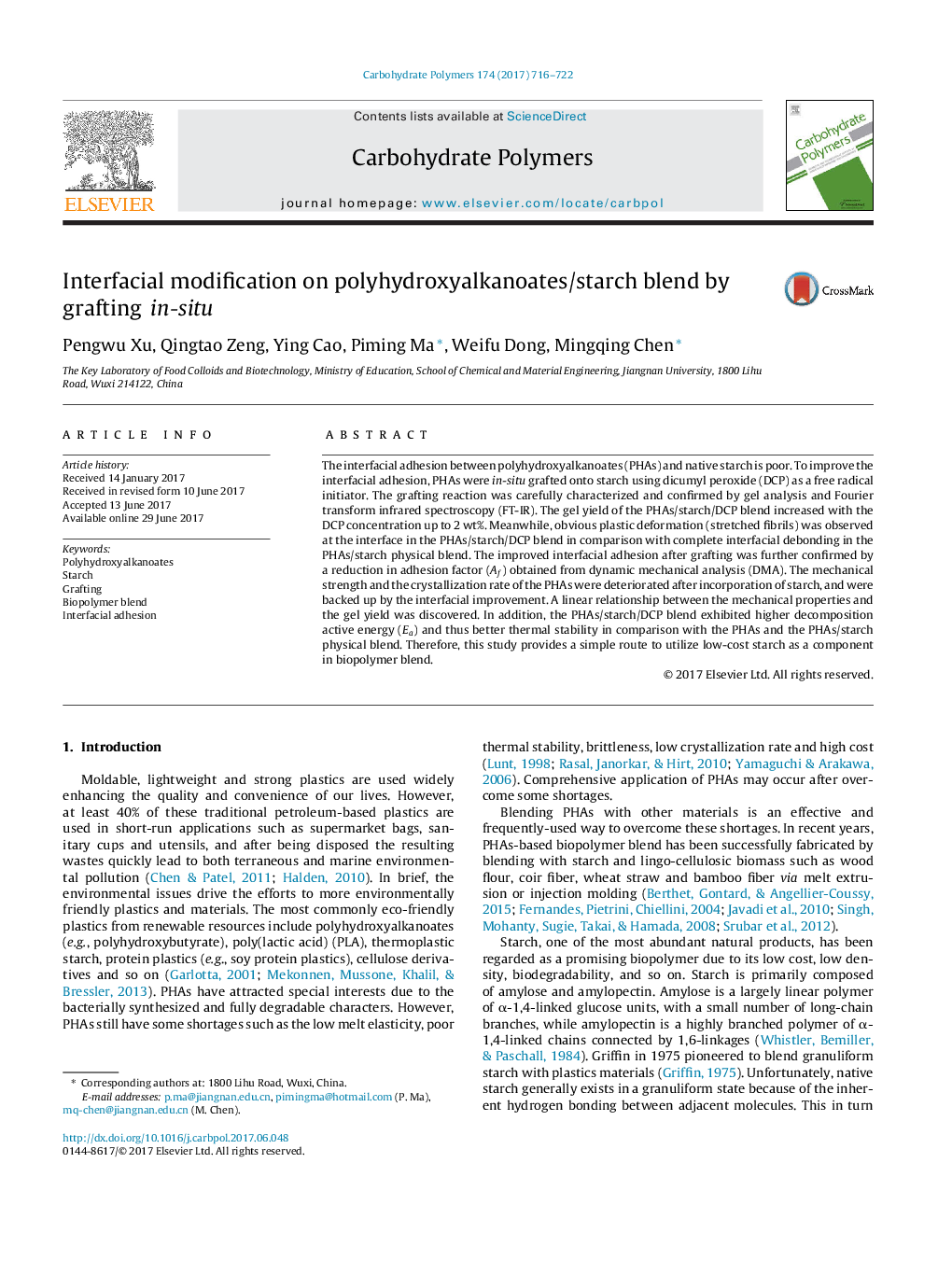| Article ID | Journal | Published Year | Pages | File Type |
|---|---|---|---|---|
| 5156858 | Carbohydrate Polymers | 2017 | 7 Pages |
Abstract
The interfacial adhesion between polyhydroxyalkanoates (PHAs) and native starch is poor. To improve the interfacial adhesion, PHAs were in-situ grafted onto starch using dicumyl peroxide (DCP) as a free radical initiator. The grafting reaction was carefully characterized and confirmed by gel analysis and Fourier transform infrared spectroscopy (FT-IR). The gel yield of the PHAs/starch/DCP blend increased with the DCP concentration up to 2Â wt%. Meanwhile, obvious plastic deformation (stretched fibrils) was observed at the interface in the PHAs/starch/DCP blend in comparison with complete interfacial debonding in the PHAs/starch physical blend. The improved interfacial adhesion after grafting was further confirmed by a reduction in adhesion factor (Af) obtained from dynamic mechanical analysis (DMA). The mechanical strength and the crystallization rate of the PHAs were deteriorated after incorporation of starch, and were backed up by the interfacial improvement. A linear relationship between the mechanical properties and the gel yield was discovered. In addition, the PHAs/starch/DCP blend exhibited higher decomposition active energy (Ea) and thus better thermal stability in comparison with the PHAs and the PHAs/starch physical blend. Therefore, this study provides a simple route to utilize low-cost starch as a component in biopolymer blend.
Related Topics
Physical Sciences and Engineering
Chemistry
Organic Chemistry
Authors
Pengwu Xu, Qingtao Zeng, Ying Cao, Piming Ma, Weifu Dong, Mingqing Chen,
